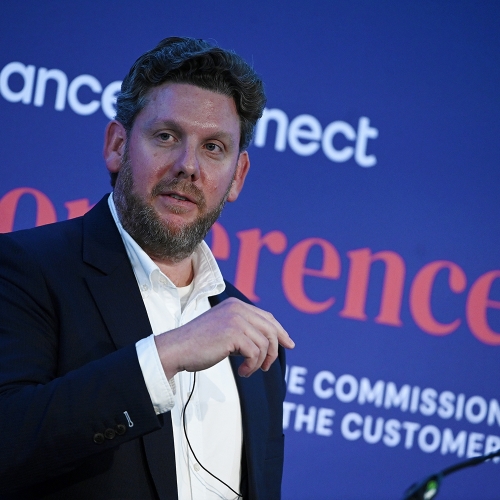In association with Leaseurope and Eurofinas
Summary
The Asset Finance Connect ESG Unconference brought sustainability representatives from independent lenders and captives together to discuss the emerging opportunities and challenges facing the industry as we transition to net zero.
Asset Finance Connect’s head of content, David Betteley, moderated a session focused on the uncertainties confronting the ‘green’ asset finance industry – new risks, new technologies and residual value challenges, asking the questions: What is a green asset? Who is best placed to deal with these changes – captives or independents? Is regulation the driving force behind this transition?
What is a green asset?
Defining a green-renewable energy asset isn’t easy! When you think of green assets, most people think of traditional renewable energy assets such as solar panels and wind turbines for reducing carbon emissions. However, these assets are evolving with the greenwashing agenda and now must include the accompanying infrastructure.
Many participants highlighted the shift in green assets over the last four to five years with regulation playing a role in how green an asset is with Scope 3 reporting focused on the supply chain.
There is a growing concern about the cost of going green, especially at the shareholder level, and the associated risk, increasing and inconsistent regulation, and new technologies.
There is an additional risk from a traditional asset financiers’ perspective as some renewable energy assets wouldn’t pass the traditional funding test to assess the suitability for financing secured on an asset.
With changing technology, such as fibre optic cables and battery storage units, assets that can be collaterised are now different to those in the past. Many green assets are static and would therefore fail the identifiable, repossessable and resaleable test, which is seen as risky for finance companies even though these assets can still represent satisfactory collateral.
There should be no risk and no issue with funding such static key assets that are pivotal to the client. As the world is changing and what you can collateralise is changing, a new industry mindset is needed to look at “behavioural collateral”.
Some participants believe that returns on investments in green assets are cyclical and unstable. Changing regulation results in some green assets no longer being ‘green’ within one to two years, leading to an unsteady and volatile return on green investments.
Regulation
Circularity has been driven by regulatory guidelines, with people and businesses being forced down the green route because of regulation, was the overwhelming feeling from unconference participants. Regulation has developed over the past 4-5 years and is rigorous over what is deemed to be ‘green’.
It was noted that the impact of regulation on the green agenda is substantial, while the differences around the world with differing net zero dates in various regions create much confusion. This has led to difficulties for global manufacturers who are facing different net zero target dates in different countries. However, one thing is similar in that regulation is evolving everywhere, with governments changing the rules but giving the industry very little notice.
The introduction of Scope 3 reporting has also caused difficulties for the industry, especially when measuring an asset’s CO2 footprint in the supply chain. Many companies are at a loss as to whether they are measuring and accounting for carbon emissions in the correct way.
It was felt that there is a need to study regulation so that everyone can work towards the right solutions. There needs to be consistency in regulation in the long term, to avoid the massive distorting impact of current changing rules.
Risk
We are entering a ‘new world’ which requires a mindset change over what is risk and what can be used as collateral to minimise that risk. New financing models and new green assets are causing uncertainties for the industry surrounding new risks – additional credit risk, usage and performance risk, compliance risk in the regulated market, risk to portfolios, new technologies and residual value (RV) uncertainty.
Finance companies see increased risk when entering into long-term contracts for green assets that look good today but could be redundant within five years. Rather than take this risk alone, finance companies are increasingly looking to partnerships and governments for support.
Business models such as ‘equipment-as-a-service’ and ‘pay-per-use’ models bring with them usage and performance risk, added risk for OEMs to understand and manage. Partnering with specialists in the implementation of pay-per-use solutions such as Findustrial can help manufacturers to develop usage-based and future-oriented business models using data-driven platforms to help OEMs embrace these new solutions.
Green assets tend to have a long lifecycle and this increased usage can affect asset valuations leading to more risk. The RV risk is being pushed from OEMs to financiers who don’t fully understand performance risk. Funders generally do not understand assets and the way they work and, until that changes, the market will move to asset managers in the middle of the life cycle who can exploit the ‘new world’ market as they truly understand the asset and its use.
Lack of infrastructure
It was unanimously felt by unconference participants that the industry is backing the transition to net zero with liquidity being added to the green agenda – but unfortunately the infrastructure is simply not there.
For example, the use of hydrogen as an alternative energy source was discussed during the session, but again the infrastructure is challenging with investment needed for infrastructure to bring the overall cost down for the customer.
Technology, assets and financing products are all geared around environmental issues, but there are many questions surrounding the infrastructure: How will it be financed? Who takes responsibility for the infrastructure?
Many industry participants feel that government agencies need to be involved in the funding of infrastructure. However, when we look at the first petrol stations, it was not governments, but private energy providers who financed the forecourt infrastructure.
Collaboration is needed between governments, energy providers and corporates to solve the issue. Once you have volume and scale, the infrastructure will come and be a massive funding opportunity for the industry.
Partnerships
Unconference delegates discussed the importance of ecosystem partnerships with manufacturers, lenders, start-up companies and government agencies sharing the risk and cost of green assets and their much-needed infrastructure.
Orchestrating a range of partnership arrangements will enable customers to mitigate the cost and risk of transitioning to green assets.
Usage-based and servitization models are front and centre with customers, but there needs to be a focus on providing money while liaising with partners for these new models.
Whilst banks have expertise in assets, RVs and credit risk at the beginning and end of the asset’s life, when focusing on the circular economy there is a big gap when it comes to the middle of the asset’s life. Bank asset teams are not well placed to look at usage and servitization as it is not credit risk. Therefore, they need to partner with asset management teams who really understand the whole lifecycle of the asset: “Supporting an asset manager in the green agenda is critical”.
It was also noted that the industry needs to deepen manufacturer relationships and enter into risk sharing or buy-back agreements in order to allow proper risk-taking on new assets.
Lenders need to get smart enough to assess which manufacturers have the right technology to make it past the first wave of consolidation that will inevitably occur in the coming two to three years. Knowledge needs to expand beyond a simple financial analysis with a need for lenders to develop the acumen to go beyond the numbers and get comfortable with the long-term potential of start-up players in the transition.
Captives v independents
The unconference session reignited an on-going discussion about the differing challenges and opportunities for captives vs independents in the transition to net zero.
Large bank independents are suffering from internal inertia and therefore not using their balance-sheet strength to maximum advantage. One non-captive lender noted that independents are falling behind captives in terms of the level of technology but are more sophisticated in terms of products.
It was highlighted that there is now a better appreciation of purpose-based decisions and independent bank lenders are now addressing the right thing to do. Banking is changing, it has a role in society and needs to make a change.
By releasing the inertia from the past, one independent lender noted that they are now able to be more creative and see servitization as a way of moving forward and partnering with others, with a key objective to explore emerging service providers and provide funding.
Risk and opportunities for captives are quite different than those faced by independents. When it comes to risk, independents can choose risk and make decisions, while captives do not have these options – they have to support their manufacturers and cannot choose risk.
Unlike manufacturers and captives, independents are not experienced with the circular economy and the whole life cycle of an asset, with expertise purely at the beginning and end of the asset’s life.
Independent lenders need to build relationships with partners when it comes to circularity and financing an asset for more than one life, and where there is uncertainty around the RV of the asset.
Captives, on the other hand, are willing to promote the circular economy and optimise the life cycle of the asset. They have the ability to refurbish and recondition end-of-initial-life goods and re-sell them within a closed OEM/captive/customer marketplace.
Captives see that while they are in a privileged position due to their tight OEM-parent relationships, they cannot do it all by themselves as they can’t possibly have enough risk appetite to cover all the transition needs. There will come a point where they get maxed out with individual customers or with certain asset types. OEMs need to become open to entering into risk-sharing relationships and partnerships with non-captives as well.
Concluding remarks
The takeaways from the session undeniably focus on the lack of infrastructure and investment in infrastructure. While the financing opportunities are in place, the investment in infrastructure is falling behind and affecting the investment in green assets.
The impact of regulation on the green agenda was addressed with the participants highlighting that regulation is constantly changing and is inconsistent on a global scale. There is a need for consistency in regulation as it can be seen as the driving force in the transition to net zero.
A need for increased collaboration and partnerships between lenders, manufacturers, governments, start-up companies and pay-per-use specialists was noted to spread the increasing risk and cost, and to better understand new business models, new risks, RV uncertainty and new technological challenges.




